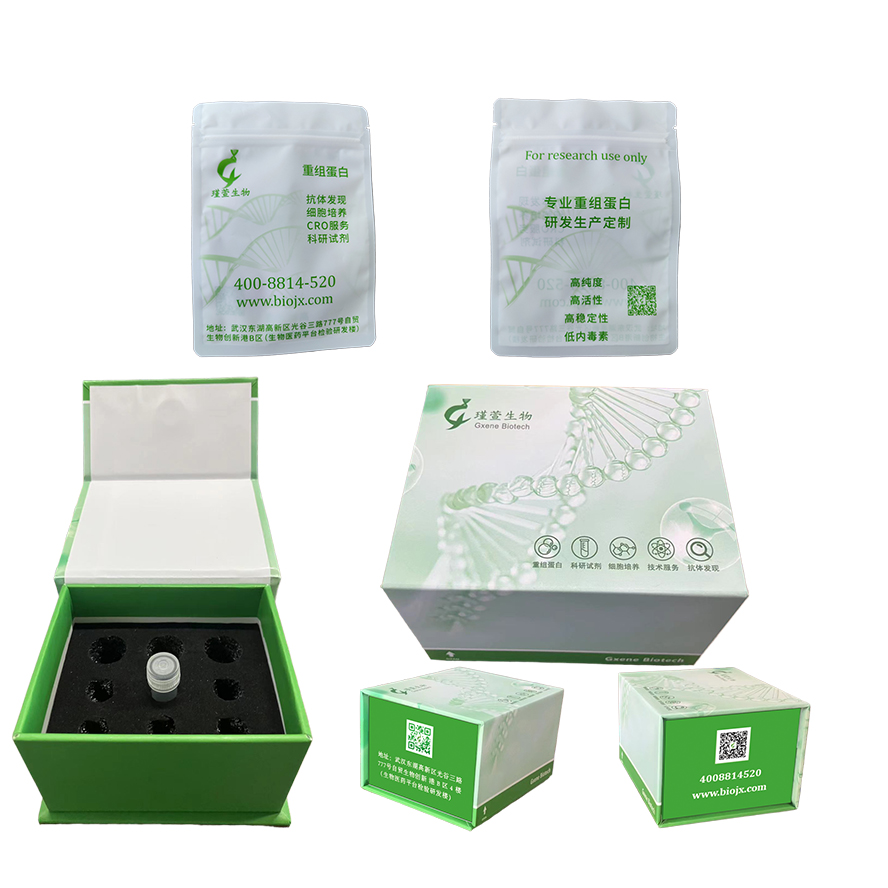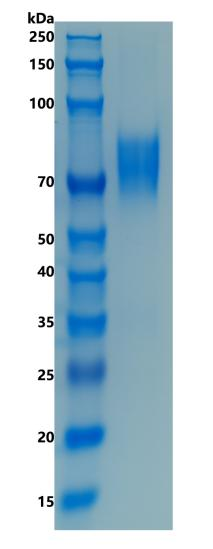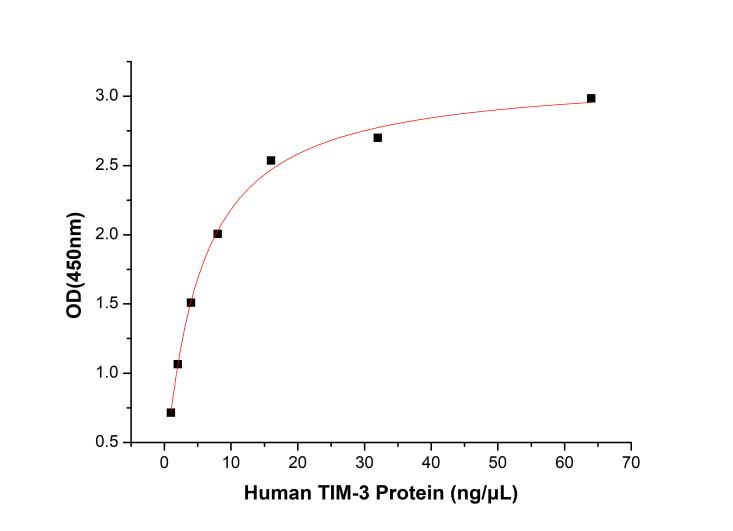




T 细胞免疫球蛋白 mucin-3 (TIM-3) 属于 Ig 超家族。TIM-3 通常由多种小鼠和人类免疫细胞类型表达。TIM-3 首次在产生 IFN-γ 的 Th1 和 Tc1 细胞上发现。TIM-3 作为抑制性受体,抑制 T 细胞功能。TIM-3 与自身免疫和癌症中免疫反应的调节有关。
促销: 满免 购物 满300元 免运费。

商品编号: GX00526 库存: 100支
上市时间: 2024-12-11 16:51:20 浏览次数: 1003次
研究方向
Human TIM-3(T cell Immunoglobulin and Mucin domain-containing protein 3,T细胞免疫球蛋白和黏蛋白结构域蛋白3)是一种重要的免疫检查点分子,主要在T细胞、NK细胞和某些髓系细胞中表达。它在免疫调节中起关键作用,特别是在免疫耐受和免疫逃逸中。以下是关于Human TIM-3的详细介绍:
Human TIM-3在免疫调节中具有重要作用,其独特的结构和功能使其成为免疫学和疾病研究中的热点。未来,TIM-3可能在疾病诊断和治疗中发挥重要价值。
1. 基本结构与功能
2. 表达与分布
3. 免疫调节作用
4. 临床意义
5. 研究进展
总结
Immobilized Human Galectin9 at 2 μg/mL can bind recombinant human HAVCR2 with a linear range of 0.3-5 μg/mL.
HAVCR2 also known as TIM3(T cell immunoglobulin and mucin domain-3), is a 60 kDa member of the TIM family of immune regulating molecules. TIMs are type I transmembrane glycoproteins with one Ig-like V-type domain and a Ser/Thr-rich mucin stalk region. Mature human TIM-3 consists of a 181 amino acid (aa) extracellular domain (ECD), a 21 aa transmembrane segment, and a 78 aa cytoplasmic tail. An alternatively spliced isoform is truncated within the mucin-like stalk.TIM-3 is up‑regulated on several populations of activated myeloid cells (macrophage, monocyte, dendritic cell, microglia, mast cell) and T cells (Th1, CD8+, NK, Treg). Its binding to Galectin-9 induces a range of immunosuppressive functions which enhance immune tolerance and inhibit anti-tumor immunity . TIM-3 ligation attenuates CD8+ and Th1 cell responses and promotes the activity of Treg and myeloid derived suppressor cells. In addition, dendritic cell-expressed TIM-3 dampens inflammation by enabling the phagocytosis of apoptotic cells and the cross-presentation of apoptotic cell antigens. It also binds the alarmin HMGB1, thereby preventing the activation of TLRs in response to released tumor cell DNA. TIM-3 interactions with Galectin-9 can alternatively trigger immune stimulatory effects, such as the coactivation of NK cell cytotoxicity.